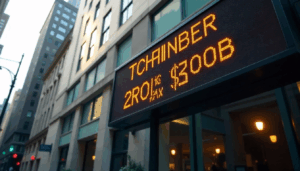Stablecoin Giants Tether, Circle Battle for Edge in Regulatory Landscape
A recent Wall Street Journal article explored the contrasting approaches of Tether’s Giancarlo Devasini and Circle’s Jeremy Allaire in the ongoing battle for stablecoin dominance.
Having recently stepped down as Tether’s CFO to become its chairman, Devasini maintains a low profile in Lugano, Switzerland. In contrast, Circle’s founder, Jeremy Allaire, actively engages with politicians and financial executives, shaping regulatory discussions around stablecoins.
This clash isn’t just about business—it’s ideological. Tether champions crypto’s decentralized ethos, while Circle seeks regulatory acceptance to integrate stablecoins into the traditional financial system. “Circle will not win if Tether is alive,” Devasini allegedly said, as reported by the WSJ.
The outcome of this rivalry will influence the future of digital currencies. If regulatory efforts succeed in marginalizing Tether, Circle’s USDC could gain dominance, pushing stablecoins further into mainstream finance. However, if Tether weathers regulatory scrutiny, it will reinforce crypto’s capacity to operate beyond centralized control.
Meanwhile, U.S. lawmakers have proposed multiple bills aimed at stablecoin regulation, including the Senate’s GENIUS Act, the House’s STABLE Act, and bipartisan efforts led by Maxine Waters and former Representative Patrick McHenry. These legislative measures focus on reserve and reporting requirements, and analysts at JP Morgan suggest that Tether may need to adjust its reserves to comply if any of these bills become law. However, the legislative process remains in its early stages, and the timeline for enactment remains uncertain.
Jeremy Allaire, speaking on Fox’s “Mornings with Maria” on Tuesday, described digital currency as a “technology superpower dollar” that could redefine global finance. He argued that the U.S. is in a competitive race with China to establish dominance in the digital currency space, positioning USDC as “America’s first digital dollar.” Backed by U.S. Treasury bills, repo agreements, and cash reserves, USDC has facilitated trillions of dollars in transactions, with a reported 100% growth over the past year.
Allaire emphasized that stablecoins like USDC could not only strengthen the U.S. economy but also reduce transaction costs for businesses and consumers. By eliminating fees associated with credit cards and international remittances, he argued, digital currencies could put more money back into the pockets of households and small businesses.
As regulatory pressures mount and the stablecoin sector evolves, the contest between Tether and Circle is set to shape the future of digital finance on a global scale.
Share this content:













